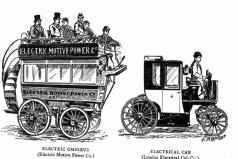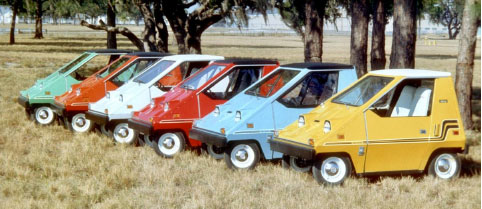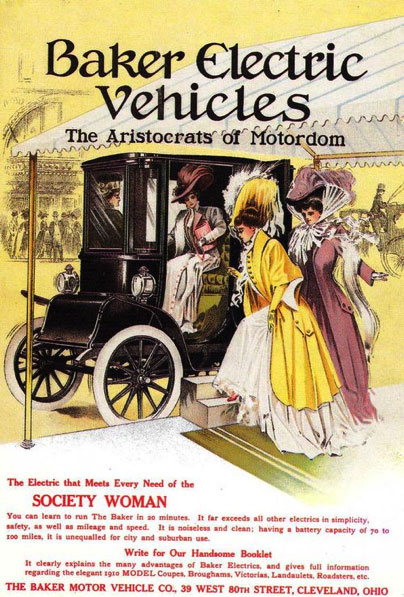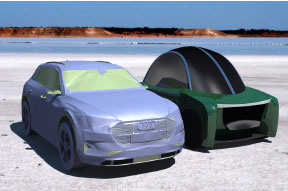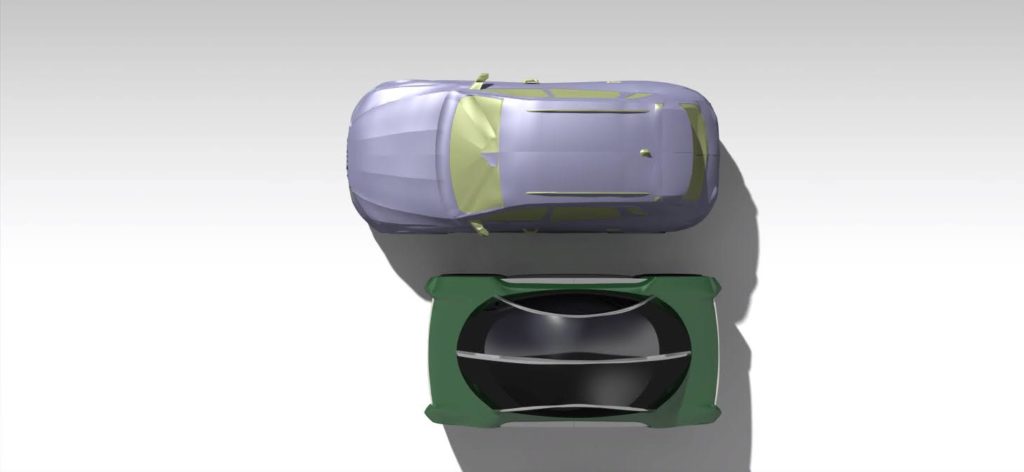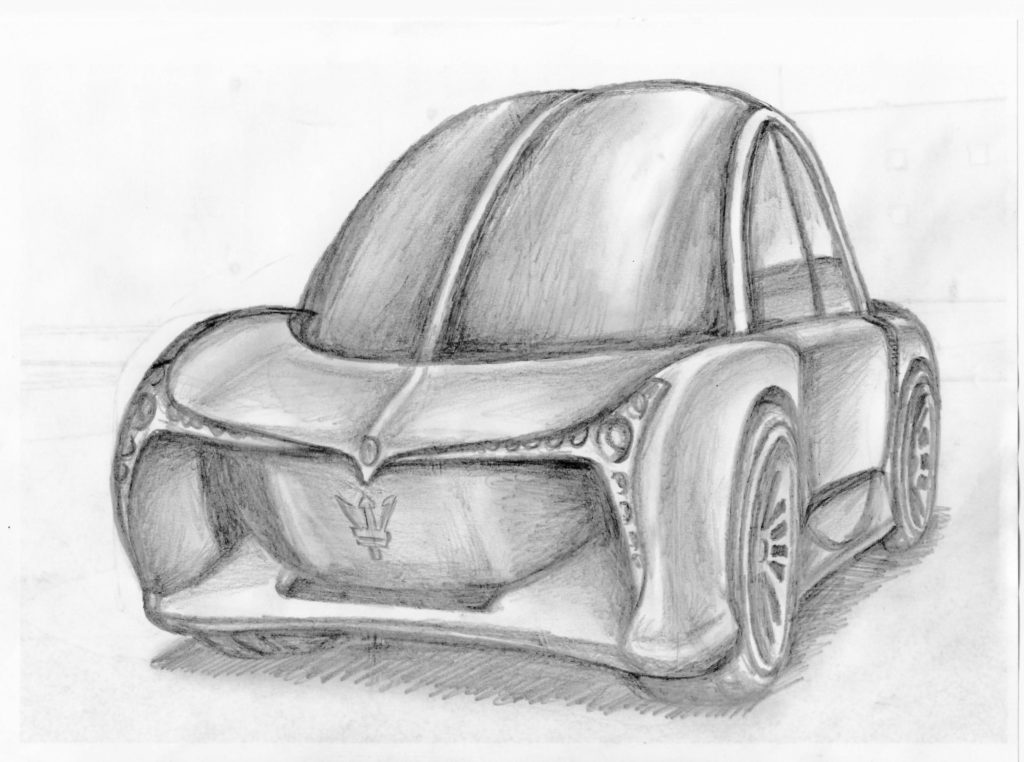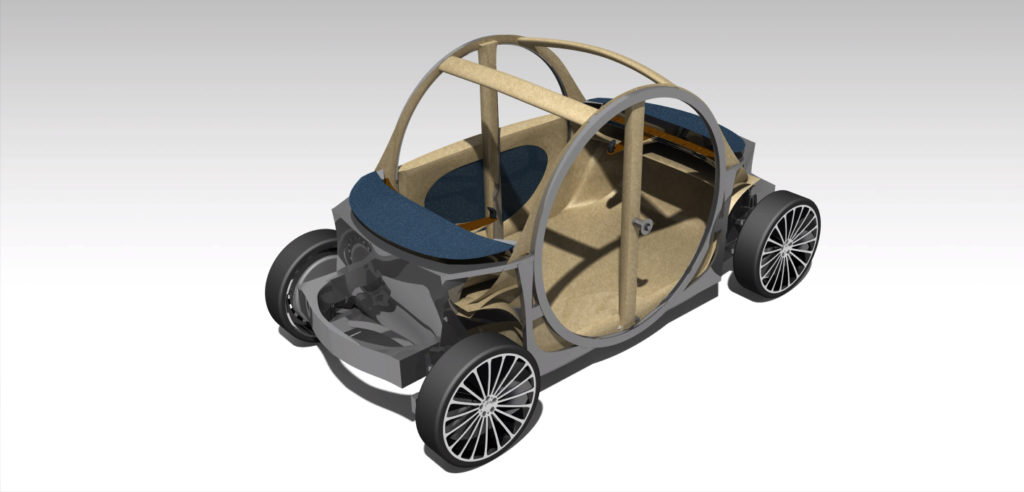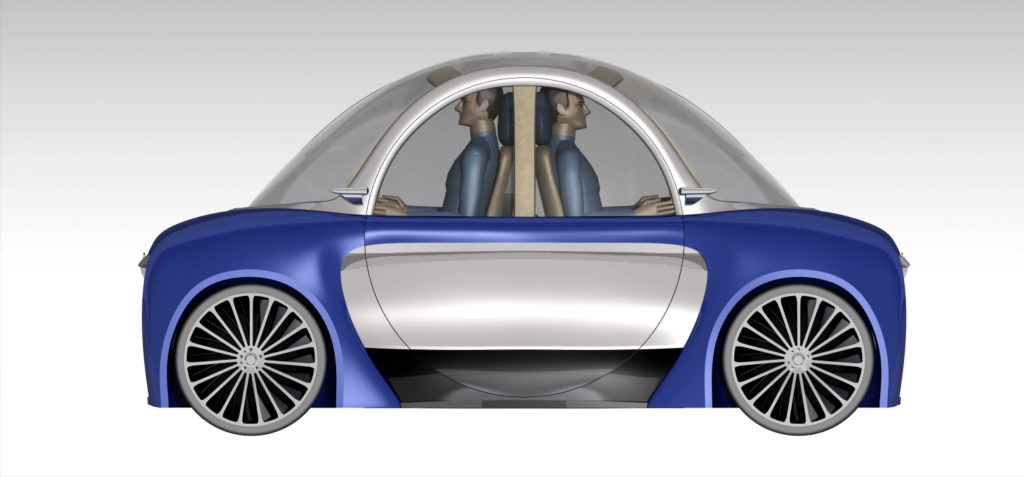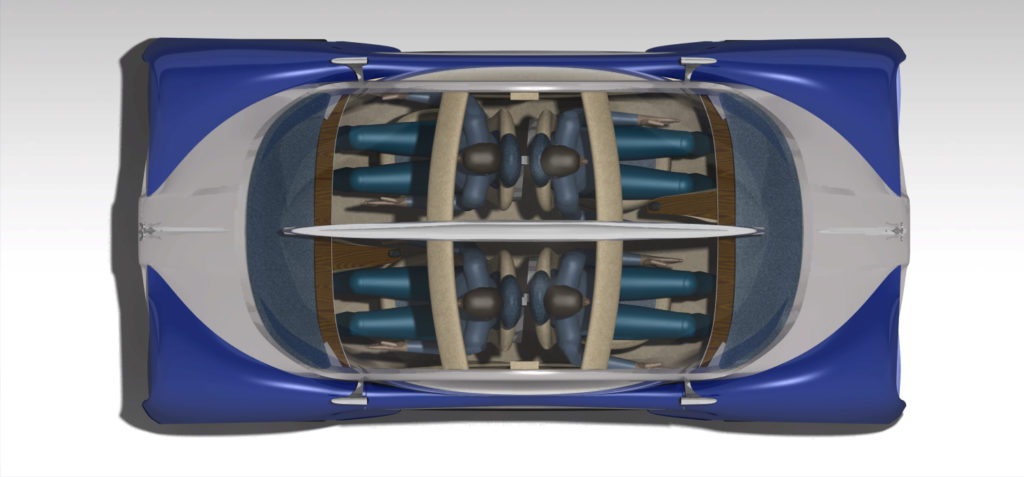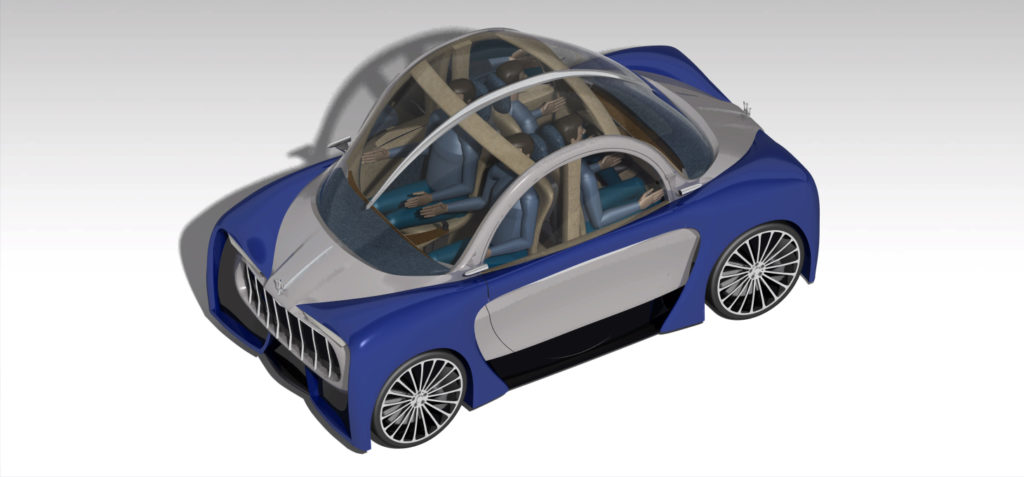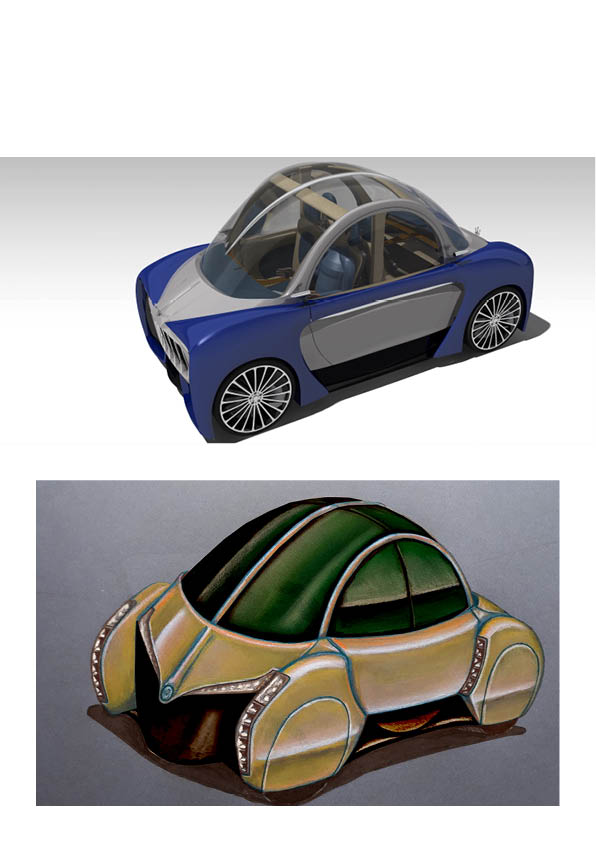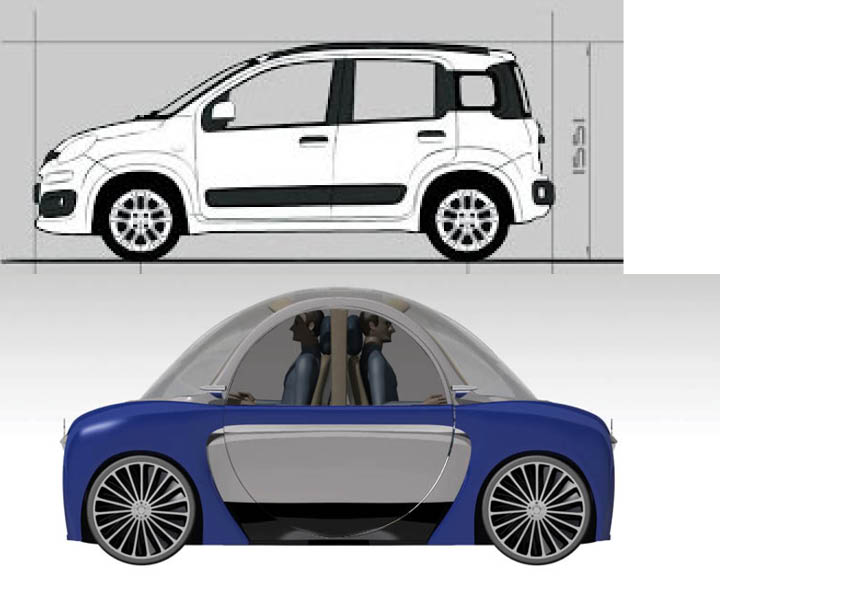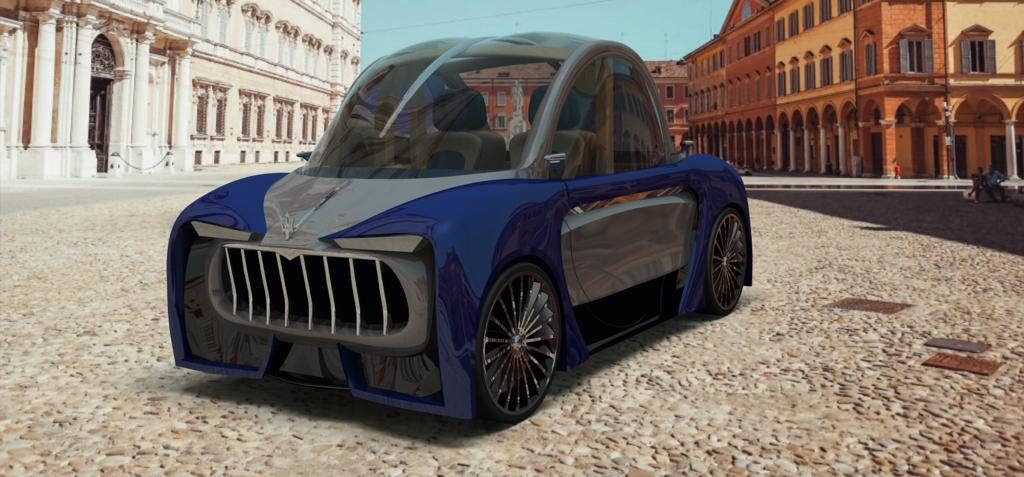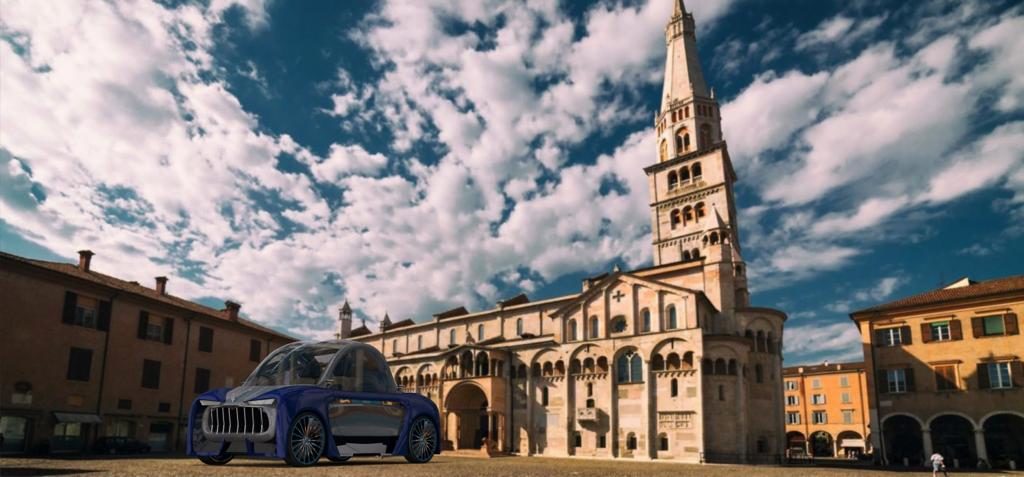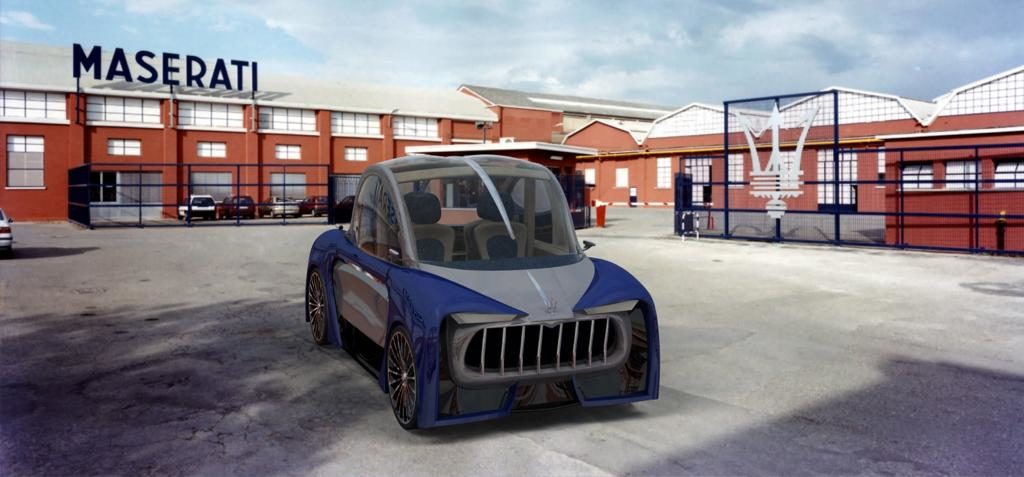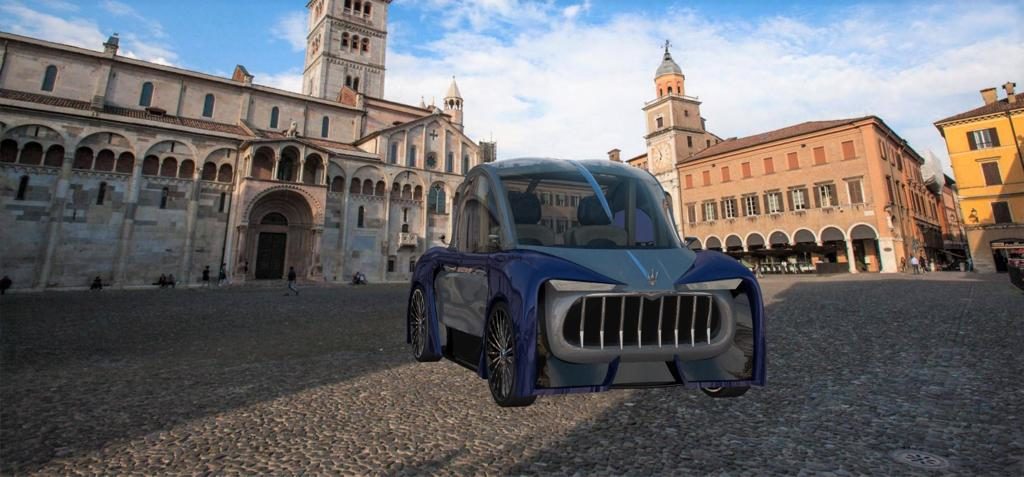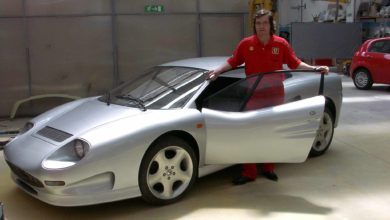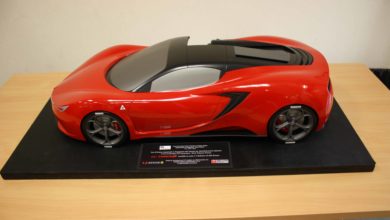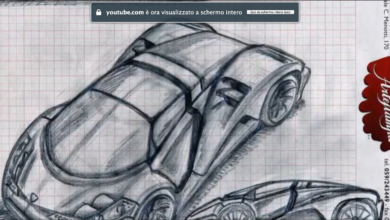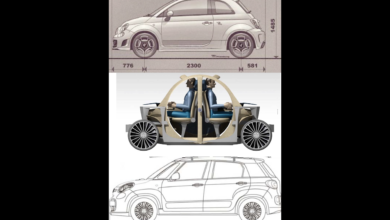THE CITY CAR FOR THE SUSTAINABLE MOBILITY OF THE FUTURE.
Let's talk now about a topic of absolute actuality, even if apparently, it is outside our mission to present the excellences of the Modena Planet.
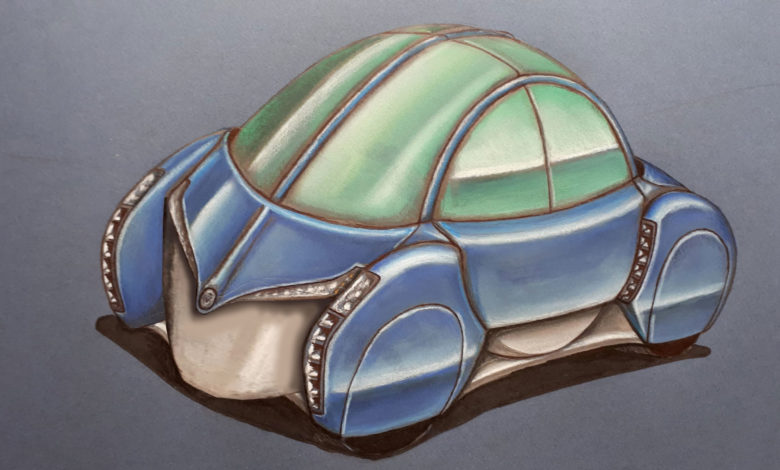
READ THE FULL HISTORY (Click here)
READ THE PROJECT DEVOLPMENTS (Click here)
A RESEARCH PROJECT BY PROF. FABRIZIO FERRARI, TUTOR OF THE ENGINEEERING DEPARTMENT “ENZO FERRARI” OF THE MODENA AND REGGIO EMILIA UNIVERSITY
In reality it is also part of the same “Pianeta Modena”, as it is a research project designed by Prof. Fabrizio Ferrari, for years a teacher of bodywork design and components at the “Enzo Ferrari” engineering department of the University of Modena and Reggio Emilia, and now a tutor at the disposal of the best graduating students of the engineering degree. A research project developed thanks to a degree thesis by graduating student Mauro Conte, with Prof. Francesco Leali, Director of the Automotive Academy of the University of Modena and Reggio Emilia and with the technical supervision of eng. Antonio Cesaretti (former Maserati and Ferrari).
HISTORICAL BACKGROUND: THE ELECTRIC CAR IS NOT REAL NEWS
The topic is not only of absolute new, but also definitely projected towards the future, just because in last years so much discussion about environmental sustainability and above all electric cars. But we must first of all remember that the electric car is not a real novelty, as already at the end of the 19th century, electric cars began to build, together with those with the first combustion engines and the vapor. While the steam cars were quickly abandoned, due to the low performance and the weight, which made this type of traction suitable only for trains, in practice, electric cars and those with internal combustion engine, continued in their until the twenties of the last century. Electric cars were appreciated especially in big cities, such as New York, and in particular they were absolutely appreciated by the female public, thanks to their practicality of use. Just think only of the complication of the manual starting with the crank, in cars with eight cycle engines, which required a discreet muscular strength, but also a certain knowledge of the engine itself, in order to start it in cold, in particular atmosphere with the rudimental systems of ignition and power supply of the age. In addition, the electric car did not stink or dirty (as often happened to cars with combustion engines of the first decades of the last century) and was even much more reliable at the time.
But in the decade between 1920 and 1930, the car with the traditional internal combustion engine, was the winner and, especially with the adoption of new electric starter systems and more refined ignition and fuel systems, the car with the eight cycle engine became simple, practical and reliable in everyday use.
But why the electric car was deactly abandoned by the almost all of the manufacturers?
The problem, substantially, was always the same that is repeated today: energy storage which, in fact, does not allow adequate autonomy. While in cars with internal combustion engines it is easy to guarantee an autonomy of about 600 km and more, simply with a fuel tank of adequate weight and capacity, to obtain the same result, in every driving condition: uphill routes, traffic, stop and go, etc. with an electric car, you need substantially an exaggerated battery pack, both as dimension, but especially as weight which, in its time, affects on the capacity of travel (paradossally consequently reducing it, even though travel …)
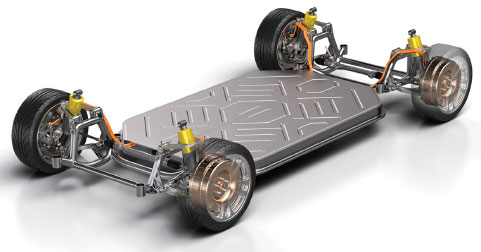
This because the battery capacity, although constantly improved over the years, with new technologies and materials, still today represents a limit to this type of automotive drive, at least as regards the heavy vehicles for the largest and longer ). In addition, to the adequate infrastructure, for the “refueling”, that is to say the recharge of the batteries, the problem of recharge times always remains, in fact absolutely not comparable to the “refuelling” times of cars with internal combustion engines.
A TOTALLY NEW WAY OF CONCEIVING THE SUSTAINABLE MOBILITY OF THE FUTURE
We necessarily had to make this long historical introduction, in order to be able to better understand the true sense of this research project which, although most of the technologies are already available today, must in fact and re-think of the full package of the car, at least as we have always seen and imagined it today.

First of all the type of car: compact for the city. This to try to reduce the overall dimensions, weight as much as possible and consequently improve autonomy as much as possible. Autonomy that in fact, in a car mainly for city use, has already an advantage at departure, thanks to routes that are generally not high and above all at low speeds. At this point, we can find out how a “full electric” package can also offer us the possibility of creating a vehicle in order to maximize the interior space for occupants, at the same time minimizing the external space of the car. Which makes it definitely a practical object to use and park and at the same time but also comfortable and spacious like a limousine. Such as? In fact by eliminating all non-essential mechanical parts and especially freeing the entire area of the cockpit that must remain completely and absolutely “habitable”.
Easier to say than to do and for sure, all this would be very difficult with traditional mechanics. But not with an absolutely “full electric” and intelligent package: with radial electric motors inside the wheels which, controlled by a control unit, can so operate not only by traction, but also partially by brake, with energy recovery for recharging the batteries and also from the differential, always thanks to the control unit that regulates the relative speed, according to the needs and therefore as well as “torque vectoring” for perfect control of the car in every driving situation.
HOW TO MAKE THE MOST ADVANTAGE OF A TRUE “FULL ELECTRIC” PACKAGE
Obviously no gearbox is needed (the electric motors, notice, have the maximum torque always constant) and in addition the control unit can manage the traction on two axes, acting all four motors simultaneously (4×4 all-wheel drive, n / a) , suspending the motion of an axis or single motors inside in each wheel rim. But it still was not enough and then then also thought of a steering system on the four wheels, also fully electric, through actuators and using the same electric motors in the wheels. Which, if commanded via a remote control or a joy stick, not only allows to eliminate also the traditional rack steering system, but also the steering column and, if you want, even the same steering wheel! At this point, in order to completely free the cabin, it was to organize a dashboard with virtual instruments, which project data such as speed, battery charge, external and internal temperature, etc. Directly on the windscreen, so as to create a dashboard with free shapes, which works more as a support for a laptop computer or a tablet, which not intended in the traditional sense.
What was still missing to guarantee the vital functions of our city car of the future? We ensured traction, braking, steering and relative controls, in practice all thanks to the size of the radial electric motors in the wheel rims, plus the control unit and only some inverters but, obviously, the “power” still missed. Battery pack that, in order to not negatively alter the handling of our car (which is also intended to run at 90% of the cases at low speed on medium / short travels), we have provided the battery pack to stay in the double bottom of the cabin, inside the two axle wheels, clearly in a protected position and especially in the lower area of the center of gravity of car.
At this point the time had arrived, having defined the basic package, to conceive the definitive layout and especially to begin to set the dimensions of the car, not only by keeping always in the initial mission of searching for maximum interior habitability, in relation to the minimum external space, but still adding some practical advantages that this particular package could still offer. The secret? Continue to see the vehicle with disenchanted eyes and especially not be influenced by classic solutions which, apparently, may seem unique and immutable but which, if revolutionized, can easily change, adding more further advantages.
THANKS TO THIS INNOVATIVE PACKAGE AND ESPECIALLY TO THE PARTICULAR LAYOUT, A REAL “SHUTTLE” FROM THE CITY HAS BEEN OBTAINED
An example for all? The absolute symmetry of the front and rear part of this particular car which, thanks to a double row of seats arranged “back to back” and together with the “virtual” controls and instruments, in addition to the various parts that can direct motion, as for example the led optical units which, always thanks to the intervention of the control unit, can easily change from front to rear (in their different functions); we said, thanks to all these unusual news, the car can move indifferently in one sense or the other. In fact, it is sure not necessary to insert the reverse gear for this but, always on order of the ecu, the radial electric motors in the wheels, it can very easily reverse their motion, as well as the four steering wheels, guarantee the possibility of reverse the direction of our vehicle in the most natural way (obviously those driving will also have to arrange on the other row of seats, in the forward way).
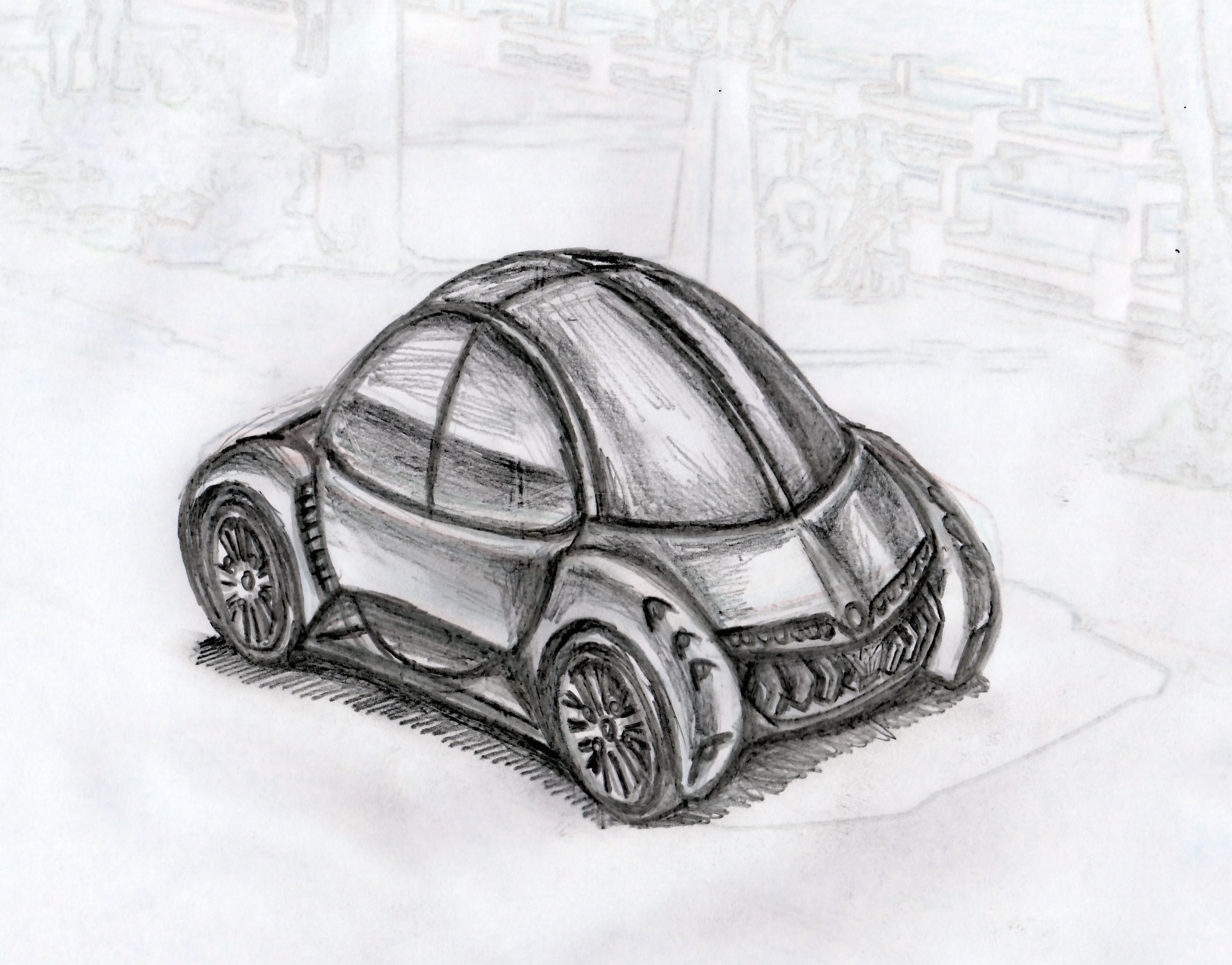
The advantages of a similar solution? Except the incredible handling and practicality in the city – imagine only of parking in one way and then moving from the parking directly in the opposite sense (without having to do dangerous backwards in traffic) – it is not necessary to forget also the significant savings on the production costs of the individual parts, for a vehicle whose symmetry is almost total: not only the right and left part, but also the front and rear (therefore windscreen / rear window, hoods, fenders, etc.)
Does all this look crazy or revolutionary? The Professor Ferrari still was not completely satisfied and, especially by this latest characteristic of the perfect symmetry of the car in every side, it wanted to obtain even the most beautiful particularity and, if we want, even spectacular …
Spectacular yes, but always in the sign of practicality, safety and extreme usability! We are talking about the rotating circular door, which opens automatically, always commanded by sensors and by the electronic control unit. It is clear that, with no external dimensions (from the shape of the vehicle), the rotating circular door can be easily automated (to the benefit of the disabled or in narrow parking situations, etc.) But it also represents active safety in non remote accidental door opening situations, exactly when a motorcyclist or cyclist passes by (with the consequences of case …)
How is all this possible? Thanks to the overall dimensions of the vehicle, as so unusual as it is definitely “comfortable”: a species of small “house” on four wheels, where the wheels are at the four extreme of the vehicle plan, so as to remove its wheelhouse from the central living space. Central living space, constituted in practice from the central semi-spherical body generated by the two circular doors (on both sides) and which, in fact, constitutes the car safety cell. While the four wheels at the sides are connected to two deformable structures, obviously identical to the front and to the rear (symmetrical), where the suspensions are attached and which form a sort of “drawers” that can be removed. Deformable safety (crash box for impacts), they can also be equipped as external trunks.
But what is the secret of this particular layout? In addition to removing any mechanical organ indispensable for the operation of the car from the central cell, the secret is in the extremely vertical architecture, generated mainly by the circles of the doors. In fact, thanks to the seats and movements of occupants always very very vertical (in and out of the car), an excellent habitability for four people is so guaranteed, in a car less than four meters in length (3858mm ), for a wheelbase of 2737mm (as long as possible, to place the wheels at four corners, privileging the interior space at the same time and for the battery pack, safety and finally also a certain stability of our vehicle from so “abnormal” dimensions ). While the width is a little less than two meters (1909mm) and finally the height of almost two meters (1910mm)! All this respects not only the initial target of obtaining a means where the maximum interior habitability correspond to the minimum external overall dimensions, but it also makes possible the passive safety of the occupants who, protected by the non-deformable central cell (as well as very spacious) and in the raised position, also due to the double bottom that generates the compartment for the removable battery packs, the occupants are also enough protected in the event of a side impact.
To complete the mobility project dedicated to the “full electric” city car of the future, designed by Prof. Fabrizio Ferrari, the part relating to the management of the car autonomy. Autonomy that was calculated at about 400 km max, but that Prof. Ferrari has imagined it implementable thanks to some provisions: first of all the removable battery pack, it can be quickly removed in particular dedicated service stations, to be replaced with a same load pack; in addition, the batteries are charged in part already in the braking phase, as mentioned at the beginning and thanks to a series of solar panels drown in the crystals (the two windscreen / rear window and the roof) and finally thanks to a fast wi-fi charging in the appropriate parking plots created ad hoc in the cities.
A project on which obviously there would still be a lot to work, study and experience, but certain a concentration of ideas for the future, which thus makes the electric car absolutely sustainable, to create a real city shuttle that can circulate freely everywhere: a kind of “Biga” of the future for mobility in our cities.
And in fact, in the end, always Prof. Ferrari has decided to call it with this name: “Biga”, precisely!
ELECTRIC CITYCAR – TENDER / SHUTTLE FOR CITY EXCHANGERS (RENTAL)
GENERAL FEATURES:
PROJECT IDENTIFICATION: EV-D (ELECTRIC VEHICLE – DOOR)
NAME: BIGA 3000
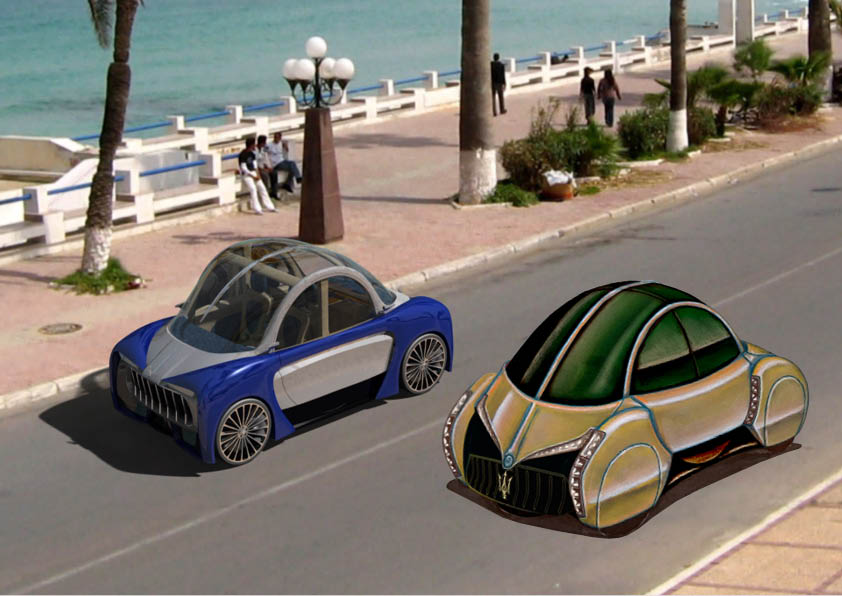
– ELECTRIC DRIVE ON THE 4 WHEELS, WITH GENERATORS MOUNTED DIRECTLY INSIDE THE WHEEL RIMS
– 4 GENERATORS (ONE PER WHEEL), USED BOTH FOR ELECTRIC TRACTION AND FOR CHARGING THE BATTERY PACK – WHEN BRAKING
– 4 STEERING WHEELS (ASSISTED STEERING, CONTROLLED BY THE CONTROL UNIT – ELECTRIC SERVO ASSISTANCE)
– REMOVABLE BATTERY PACK UNDER THE FLOOR (GAP BETWEEN FLOOR AND BOTTOM OF THE CAR)
– NO OVERALL / WEIGHT OF THE TRANSMISSION PARTS: NO GEARBOX AND NOT EVEN DIFFERENTIAL: IT IS THE CONTROL UNIT THAT CONTROLS THE 4 ELECTRIC MOTORS, INDEPENDENTLY, FOR THE DIRECT TRACTION ON THE WHEELS, ALSO VARIING THE SPEED AUTOMATICALLY. – VERY LIGHT AND RELATIVELY SIMPLE VEHICLE (AS TO TRADITIONAL MECHANICAL PARTS), COMPACT AND EXTREMELY HANDY.
– POSSIBILITY OF RUNNING IN TWO WAYS (FORWARD AND BACKWARD) AND FOR THIS EQUIPPED WITH:
– DOUBLE-WAY SEATS (WITH SMALL STORAGE BETWEEN THE TWO SEATS IN THE CENTER)
– GUIDE COMMANDS THROUGH A JOYSTICK (OR POSSIBILITY TO SET A ROUTE, WITH INDEPENDENT GUIDE)
– INSTRUMENTATION PROJECTED ON THE GLASS (THROUGH HOLOGRAM, ALSO CONTROLLED DIRECTLY BY THE JOYSTICK)
– PLANKS (FORWARD AND BEHIND) EQUIPPED WITH TABLET (REMOVABLE) WHICH CAN ALSO WORK, UPON REQUEST, AS A NAVIGATOR AND / OR INSTRUMENTATION (OBVIOUSLY VIRTUAL)
– CONTROL UNIT THAT COMMANDS THE TRACTION, CAN BE INSERTED ON ONE AXIS ONLY OR ON BOTH, ON REQUEST
– SYMMETRIC (FRONT AND REAR) LED AND LASER OPTICAL UNITS, PROVIDED WITH ALL THE FUNCTIONS PROVIDED FOR BY THE CODE, AT THE FRONT (DIRECTION INDICATORS, DAYLIGHTS, LOW AND HIGH BEAM) AND AT THE REAR (DIRECTION INDICATORS, POSITION, STOP LIGHTS, REAR FOG), OBVIOUSLY ACTIVATED BY THE SAME CONTROL UNIT, BASED ON THE ACTIVE RUNNING DIRECTION.
– THE FOUR ASSISTED STEERING WHEELS, IN ADDITION TO ALLOWING REGULAR GEAR IN BOTH DIRECTIONS, HELP THE MANEUVERS, ESPECIALLY IN A LITTLE SPACE AND ESPECIALLY THE CLOSE PARKING SPACES.
RUNNING AUTONOMY GUARANTEED IN DIFFERENT WAYS:
– CHARGING THE BATTERY PACK IN BRAKING (GENERATORS ON THE WHEELS)
– CHARGING VIA SOLAR PANELS DROWN IN THE GLASSES OF THE UPPER PART OF THE COCKPIT (ROOF AND TWO WINDSCREEN / REAR WINDOW)
– WI FI CHARGING IN THE APPROPRIATE PARKING PLOT
– QUICK REPLACEMENT OF THE REMOVABLE BATTERY PACK FROM THE BOTTOM (IF NECESSARY)
AMONG THE PROVIDED AUTOMATIONS, ALWAYS CONTROLLED BY THE CONTROL UNIT, ALSO THE AUTOMATIC HANDLING OF THE DOOR (SEE DIAGRAM AND IMAGES)


